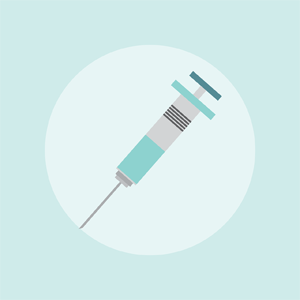Treatment of mild to moderate stress urinary incontinence with a novel polycaprolactonebased bioresorbable urethral bulking agent

Submitted: 15 February 2022
Accepted: 13 May 2022
Published: 23 May 2022
Accepted: 13 May 2022
Abstract Views: 1741
PDF: 405
Publisher's note
All claims expressed in this article are solely those of the authors and do not necessarily represent those of their affiliated organizations, or those of the publisher, the editors and the reviewers. Any product that may be evaluated in this article or claim that may be made by its manufacturer is not guaranteed or endorsed by the publisher.
All claims expressed in this article are solely those of the authors and do not necessarily represent those of their affiliated organizations, or those of the publisher, the editors and the reviewers. Any product that may be evaluated in this article or claim that may be made by its manufacturer is not guaranteed or endorsed by the publisher.
Similar Articles
- Ali Mahmood, Prianka Gajula, The role of the urogynecologist with sphincteroplasty: a multidisciplinary approach to a very common, yet devastating problem , Urogynaecologia: Vol. 26 No. 1 (2012)
- Eboo Versi, Ron Corey, THE PREVALENCE, IMPACT AND MANAGEMENT OF URINARY INCONTINENCE IN THE FEMALE POPULATION OF THE USA , Urogynaecologia: Vol. 16 No. 2 (2002)
- Hanchao Zhang, Ashok Kumar Kunwar, Yi Dai, Deyi Luo, Hong Shen, Application of the Monti channel in female adult with urethral injuries in pelvic trauma , Urogynaecologia: Vol. 25 No. 1 (2011)
- Suskhan Djusad, Surahman Hakim, Tyas Priyatini, Fernandi Moegni, Alfa Putri Meutia, Yudhistya Ksyatria, I Gede Manu, Management of stress urinary incontinence using transobturator tape: a case series , Urogynaecologia: Vol. 36 No. 1 (2024)
- P. Farnelli, A. Parodi, TRANS OBTURATOR TAPE FOR FEMALE URINARY STRESS INCONTINENCE TREATMENT: A CONTRIBUTION TO ITS EMPLOYMENT IN CLINICAL PRACTICE , Urogynaecologia: Vol. 22 No. 1 (2008)
- Kemal Sarsmaz, Asli Goker, Naci Kemal Kuscu, Leiomyoma as a cause of urinary retention , Urogynaecologia: Vol. 27 No. 1 (2013)
- Vineet Mishra, Smit Solanki, Rohina Aggarwal, Athulya Shajan, Patients with transobturator tape: a retrospective observational study of ten-year follow-up , Urogynaecologia: Vol. 36 No. 1 (2024)
- Jawad ul Islam, Ronald Grainger, Ted McDermott, Robert Flynn, John Thornhill, Repair of non-obstetrical vesicovaginal fistula: a 13-year experience of single Irish institution , Urogynaecologia: Vol. 27 No. 1 (2013)
- F. Magatti, P.L. Sirtori, C. Rumi, C. Belloni, TVT PROCEDURE FOR THE TREATMENT OF SUI: OUR EXPERIENCE , Urogynaecologia: Vol. 16 No. 1 (2002)
- Gita Nurul Hidayah, Surahman Hakim, Fernandi Moegni, Nurhadi Ibrahim, Budi Iman Santoso, Suskhan Djusad, Tyas Priyatini, Alfa Putri Meutia, Evaluation of the factors contributing to success of pelvic floor muscle training in stress urinary incontinence , Urogynaecologia: Vol. 34 No. 1 (2022)
You may also start an advanced similarity search for this article.

 https://doi.org/10.4081/uij.2022.287
https://doi.org/10.4081/uij.2022.287



